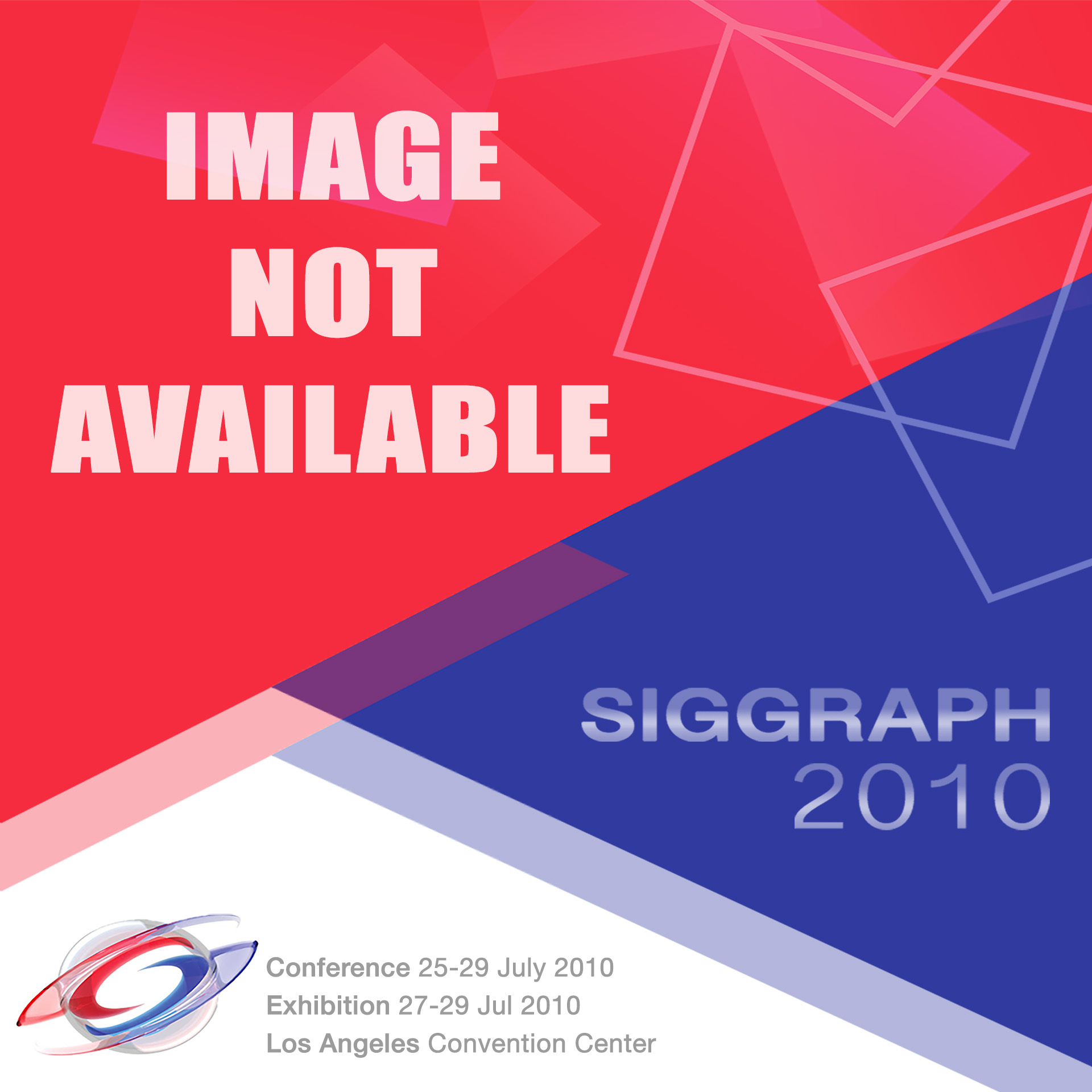“Subtle Gaze Direction” by Bailey, McNamara, Sudarsanam and Grimm
Conference:
Type(s):
Title:
- Subtle Gaze Direction
Presenter(s)/Author(s):
Abstract:
This article presents a novel technique that combines eye-tracking with subtle image-space modulation to direct a viewer’s gaze about a digital image. We call this paradigm subtle gaze direction. Subtle gaze direction exploits the fact that our peripheral vision has very poor acuity compared to our foveal vision. By presenting brief, subtle modulations to the peripheral regions of the field of view, the technique presented here draws the viewer’s foveal vision to the modulated region. Additionally, by monitoring saccadic velocity and exploiting the visual phenomenon of saccadic masking, modulation is automatically terminated before the viewer’s foveal vision enters the modulated region. Hence, the viewer is never actually allowed to scrutinize the stimuli that attracted her gaze. This new subtle gaze directing technique has potential application in many areas including large scale display systems, perceptually adaptive rendering, and complex visual search tasks.
References:
- Bahrami, B., Lavie, N., and Rees, G. 2007. Attentional load modulates responses of human primary visual cortex to invisible stimuli. Current Biology 17, 6, 509–513.
- Baudisch, P., DeCarlo, D., Duchowski, A., and Geisler, W. 2003. Focusing on the essential: considering attention in display design. Comm. ACM 46, 3, 60–66.
- Cole, F., DeCarlo, D., Finkelstein, A., Kin, K., Morley, K., and Santella, A. 2006. Directing gaze in 3D models with stylized focus. In Proceedings of the Eurographics Symposium on Rendering. 377–387.
- Collewign, H., Erkelens, C. J., and Steinman, R. M. 1988. Binocular co-ordination of human horizontal saccadic eye movements. J. Physiol. 404, 157–182.
- DeCarlo, D. and Santella, A. 2002. Stylization and abstraction of photographs. In Proceedings of the 29th Annual Conference on Computer Graphics and Interactive Techniques (SIGGRAPH). ACM Press, New York, NY, 769–776.
- Dodge, R. 1900. Visual perception during eye movement. Psychol. Rev. 7, 454–465.
- Dodge, R. and Cline, T. S. 1901. The angle velocity of eye movements. Psychol. Rev. 8, 145–157.
- Duchowski, A. T. 2002. A breadth-first survey of eye-tracking applications. Behav. Res. Meth. Instrum. Comput. 34, 4, 455–470.
- Gajewski, D. A., Pearson, A., Mack, M. L., Bartlett III, F. N., and Henderson, J. M. 2005. Lecture Notes in Computer Science. vol. 3368/2005. Springer Berlin, Germany, 83–99.
- Henderson, J. M. and Hollingworth, A. 1998. Eye movements during scene viewing: An overview. In Eye Guidance in Reading and Scene Perception, G. Underwood, Ed. Elsevier., 269–293.
- Huey, E. B. 1968. The Psychology and Pedagogy of Reading. MIT Press, Cambridge, MA. (Originally published 1908).
- Hurvich, L. M. and Jameson, D. 1957. An opponent-process theory of color vision. Psychol. Rev. 64, 384–404.
- Hutchinson, T. E., White, K. P., Martin, W. N., Reichert, K. C., and Frey, L. A. 1989. Human-computer interaction using eye-gaze input. IEEE Trans. Syst. Man Cybernetics 19, 6, 1527–1534.
- Jacob, R. J. K. and Karn, K. S. 2003. The Mind’s Eye: Cognitive and Applied Aspects of Eye Movement Research. Elsevier Science, Amsterdam, 573–605.
- Kosara, R., Miksch, S., and Hauser, H. 2001. Semantic depth of field. In Proceedings of the IEEE Symposium on Information Visualization (INFOVIS). IEEE Computer Society, Los Alamitos, CA, 97.
- Levine, J. L. 1981. An eye-controlled computer. Res. rep. RC-8857, IBM Thomas J. Watson Research Center, Yorktown Heights, N.Y.
- Levoy, M. and Whitaker, R. 1990. Gaze-directed volume rendering. SIGGRAPH Comput. Graph. 24, 2, 217–223.
- Livingstone, M. 2002. Vision and Art: The Biology of Seeing. Harry N. Abrams, Inc., New York, NY.
- Luebke, D., Watson, B., Cohen, J. D., Reddy, M., and Varshney, A. 2002. Level of Detail for 3D Graphics. Elsevier Science Inc., New York, NY.
- Mackworth, N. H. and Morandi, A. J. 1967. The gaze selects informative details within pictures. Percept. Psychophysics 2, 547–552.
- Mannan, S. K., Ruddock, K. H., and Wooding, D. S. 1996. The relationship between the locations of spatial features and those of fixations made during visual examination of briefly presented images. Spat. Vis. 10, 165–188.
- McNamara, A., Bailey, R., and Grimm, C. 2008. Improving search task performance using subtle gaze direction. In Proceedings of the 5th Symposium on Applied Perception in Graphics and Visualization (APGV). ACM, New York, NY, 51–56.
- Mitchell, G. E. 2004. Taking Control Over Depth of Field: Using the Lens Blur Filter in Adobe Photoshop CS. The Light’s Right Studio. http://www.outbackphoto.com/workflow/wf_51/essay.html.
- Ogden, T. E. and Miller, R. F. 1966. Studies of the optic nerve of the rhesus monkey: Nerve fiber spectrum and physiological properties. Vis. Res. 6, 485–506.
- Osterberg, G. 1935. Topography of the layer of rods and cones in the human retina. Acta Ophthal. Suppl. 6, 11–97.
- O’Sullivan, C., Dingliana, J., and Howlett, S. 2003. Eye-movements and interactive graphics. In The Mind’s Eyes: Cognitive and Applied Aspects of Eye Movement Research, 555–571. J. Hyona, R. Radach, and H. Deubel, Eds., Elsevier Science, Oxford.
- Parkhurst, D. and Niebur, E. 2003. Scene content selected by active vision. Spat. Vis. 16, 125–154.
- Rayner, K. 1975. The perceptual span and peripheral cues in reading. Cog. Psychol. 7, 65–81.
- Salvucci, D. D. and Goldberg, J. H. 2000. Identifying fixations and saccades in eye-tracking protocols. In Proceedings of the 2000 Symposium on Eye Tracking Research&Applications (ETRA). ACM, New York, NY, 71–78.
- Spillmann, L. 1990. Visual Perception: The Neurophysiological Foundations. Academic Press, San Diego, CA.
- Yarbus, A. L. 1967. Eye Movements and Vision. Plenum Press. (Translated from Russian by Basil Haigh. Original Russian edition published in Moscow in 1965.)
- Young, R. A. 1987. The Gaussian derivative model for spatial vision: I. Retinal mechanisms. Spat. Vis. 2, 4, 273–293.





